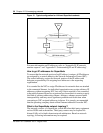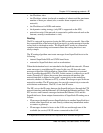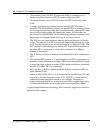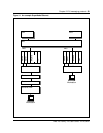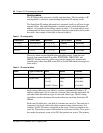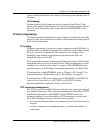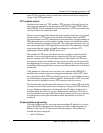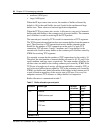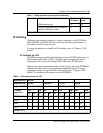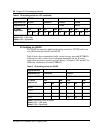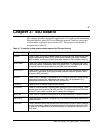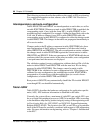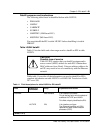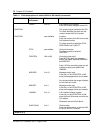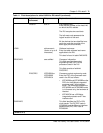
64 Chapter 2: EIU messaging protocols
297-8991-910 Standard 03.01 August 1999
• medium (1024 bytes)
• large (1600 bytes)
When the IP layer comes into service, the number of buffers allocated by
default is 10 for the small buffer size and 5 each for the medium and large
buffer sizes. These values are load and application dependent.
When the TCP layer comes into service, it allocates its own pool of transmit
buffers and adds buffers to the common pool of receive buffers. The common
pool of buffers is used for receiving IP and TCP packets.
The transmit pool owned by TCP is used for transmission of TCP segments.
The TCP transmission mechanism does not consume buffers from the common
pool. The allocation of TCP transmit and receive buffers depends on the
datafill for the number of TCP connections on the node. For each TCP
connection, TCP allocates 3 small, 2 medium, and 1 large buffer for the
transmit side. It adds as many buffers to the common pool of buffers owned by
ICBM for receiving TCP segments.
For example, assume that the number of TCP connections for the node is 10.
Therefore, the total number of transmit buffers allocated is 30, 20, and 10 for
small, medium, and large sizes, respectively. The same number of buffers for
all three sizes are added to the existing common pool owned by ICBM. If the
TCP layer is brought out of service, all the transmit buffers owned by TCP, as
well as receive buffers that are added by TCP to the common pool (owned by
ICBM), are deallocated. Initial allocation of the buffers in the common pool is
a static allocation regardless of the service state of IP layer. For every two
endpoints reserved, TCP allocates a 4-kbyte buffer for compaction.
Buffer allocation is summarized in table 7.
Table 7 Buffer allocation per end point
Protocol Buffer type Number
of buffers
Size (in
bytes)
TCP Receive 1 1518
ICBM common pool 2 1024
3 128
Transmit 1 1518
TCP own 2 1024
3 128
UDP Receive 1 1518
(Sheet 1 of 2)



